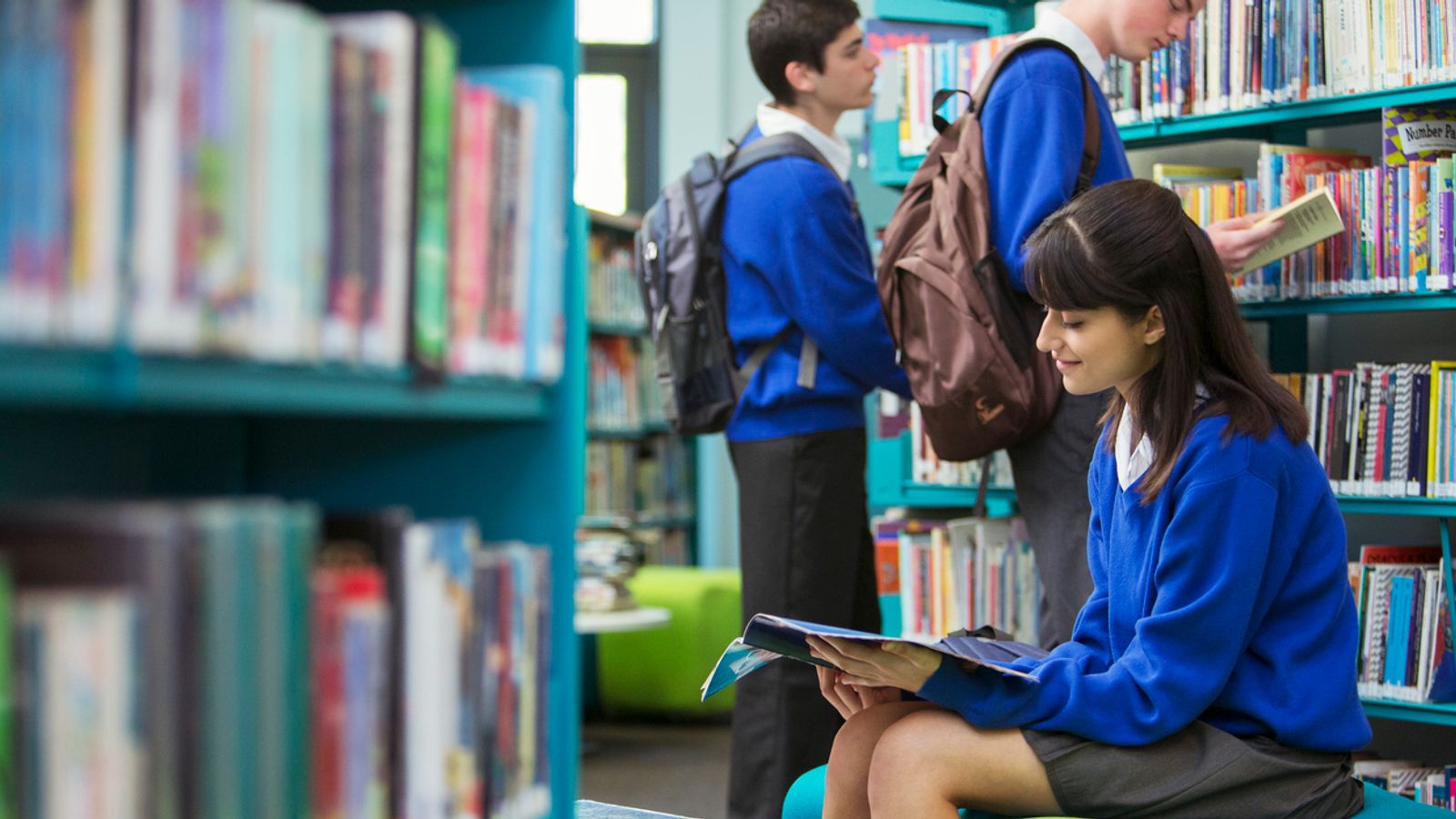England’s nine and 10-year-old pupils have landed a top five place in new international rankings for reading.
Based on tests which are usually carried out every five years, England achieved fourth place in a global education league table following the latest Progress in International Reading Literacy Study (PIRLS).
Singapore gained the top spot – with an average score of 587 – out of 43 countries, as the reading levels of nine and 10-year-olds were tested at the end of the school year.
In second place was Hong Kong, with an average score of 573, followed by Russia (567) and England (558).
The rankings revealed that Finland had an average score of 549, the same as Poland, while both Taiwan and Sweden had an average score of 544.
The study, conducted in 2021, assessed nearly 400,000 students in 57 countries during the pandemic.
Forty-three of the countries tested children of the same age – pupils in Year 5 in England.
Schools minister to look into concerns Year 6 SATs exams were too difficult
Ruth Perry: Refuse to be complicit in Ofsted’s ‘reign of terror’, sister of dead headteacher urges inspectors
Government accused of ‘inhabiting alternate reality’ over school funding
According to schools minister Nick Gibb, England’s successful performance is down to the government’s reforms – such as a focus on phonics, which teaches children to read using sounds.
In the 2016 rankings, England came joint eighth place out of 50 countries with an average score of 559, with both Ireland and Northern Ireland above England.
Please use Chrome browser for a more accessible video player
Girls ahead of boys in nearly every country
The 2021 study was disrupted by the COVID-19 pandemic, forcing 14 countries – including Northern Ireland and Ireland – to delay testing until the start of the next school year.
This meant pupils were older when they were assessed.
This group of 14 countries was not included in the main rankings table due to the different ages of the children being tested by the International Association for the Evaluation of Educational Achievement (IEA), which runs the study.
The Scottish government pulled out of the study in 2008, claiming the comparisons were too expensive and produced limited data on Scottish education, The Herald reported.
The study showed that girls were ahead of boys in their reading achievement in nearly all the countries that participated – and in England, girls had an average score of 562, while boys had an average score of 553.
However, the data suggests that England’s gender gap in reading performance in England has narrowed since girls’ average scores have fallen slightly.
Be the first to get Breaking News
Install the Sky News app for free
Results achieved ‘despite government’s record of neglect’
Female pupils in England had a slightly higher average score of 566 in the 2016 study, while and their male peers had an average score of 551.
Asked whether the fall in girls’ reading scores was a concern, Mr Gibb said the decline was “very minimal”.
He said: “In terms of girls, we don’t want there to be any decline of any group within these reading surveys.
“But what’s significant is if you take the results overall we are not seeing a significant drop in our actual score despite all the challenges of the COVID-19 period – and when other countries amongst these 43 countries did see declines in their score.”
Geoff Barton, general secretary of the Association of School and College Leaders (ASCL), argued that the government has been “quick to claim that this is the outcome of its policies”, but the results were actually achieved “despite the government’s record of neglect which has led to a critical shortage of funding and teachers”.
“The prime minister is right to praise our brilliant teachers, but he now needs to match this rhetoric with a decent, fully funded pay award which improves recruitment and retention and protects education standards,” Mr Barton added.











